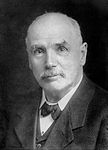United Kingdom general election, December 1918
|
|
|||||||||||||||||||||||||||||||||||||||||||||||||||||||||||||||||||||||||||||||||||||||||||||||||||||
|---|---|---|---|---|---|---|---|---|---|---|---|---|---|---|---|---|---|---|---|---|---|---|---|---|---|---|---|---|---|---|---|---|---|---|---|---|---|---|---|---|---|---|---|---|---|---|---|---|---|---|---|---|---|---|---|---|---|---|---|---|---|---|---|---|---|---|---|---|---|---|---|---|---|---|---|---|---|---|---|---|---|---|---|---|---|---|---|---|---|---|---|---|---|---|---|---|---|---|---|---|---|
|
|||||||||||||||||||||||||||||||||||||||||||||||||||||||||||||||||||||||||||||||||||||||||||||||||||||
|
|
|||||||||||||||||||||||||||||||||||||||||||||||||||||||||||||||||||||||||||||||||||||||||||||||||||||
|
All 707 seats to the House of Commons 354 seats needed for a majority |
|||||||||||||||||||||||||||||||||||||||||||||||||||||||||||||||||||||||||||||||||||||||||||||||||||||
| Turnout | 57.2% | ||||||||||||||||||||||||||||||||||||||||||||||||||||||||||||||||||||||||||||||||||||||||||||||||||||
|
|||||||||||||||||||||||||||||||||||||||||||||||||||||||||||||||||||||||||||||||||||||||||||||||||||||
|
* The Conservative total includes 47 Conservative candidates elected without the Coalition coupon, of whom 23 were Irish Unionists. |
|||||||||||||||||||||||||||||||||||||||||||||||||||||||||||||||||||||||||||||||||||||||||||||||||||||
|
|||||||||||||||||||||||||||||||||||||||||||||||||||||||||||||||||||||||||||||||||||||||||||||||||||||
| Jan 1910 election • MPs |
| Dec 1910 election • MPs |
| 1918 election • MPs |
| 1922 election • MPs |
| 1923 election • MPs |
David Lloyd George
Coalition Liberal
David Lloyd George
Coalition Liberal
The United Kingdom general election of 1918 was called immediately after the Armistice with Germany which ended the First World War, and was held on Saturday 14 December 1918. It was the first general election to be held on a single day, although the vote count did not take place until 28 December due to the time taken to transport votes from soldiers serving overseas.
It resulted in a landslide victory for the coalition government of David Lloyd George, who had replaced H. H. Asquith as Prime Minister in December 1916 during the war.
It was the first general election to be held after the Representation of the People Act 1918. It was thus the first election in which women over the age of 30, and all men over the age of 21, could vote. Previously, all women and many poor men had been excluded from voting.
The election was also noted for the dramatic result in Ireland, which showed clear disapproval of government policy. The Irish Parliamentary Party were almost completely wiped out by the hardline Sinn Féin republicans, who refused to take their seats in Westminster, instead sitting in the First Dáil. The Irish War of Independence began soon after the election.
Lloyd George's coalition government was supported by the majority of the Liberals and Bonar Law's Conservatives. However, the election saw a split in the Liberal Party between those who were aligned with Lloyd George and the government and those who were aligned with Asquith, the party's official leader.
...
Wikipedia






